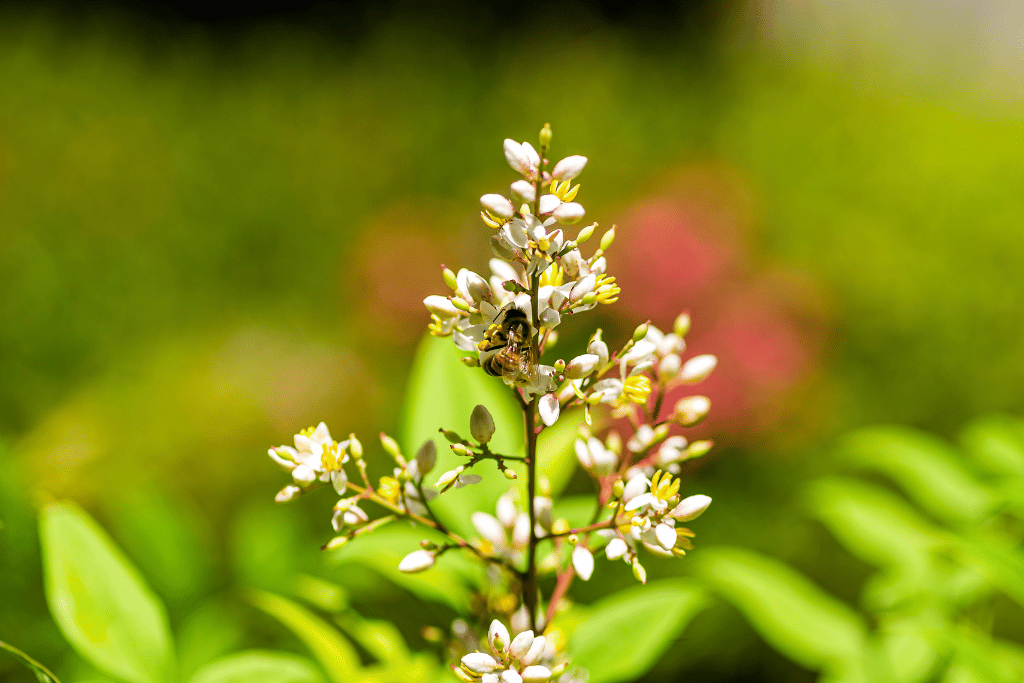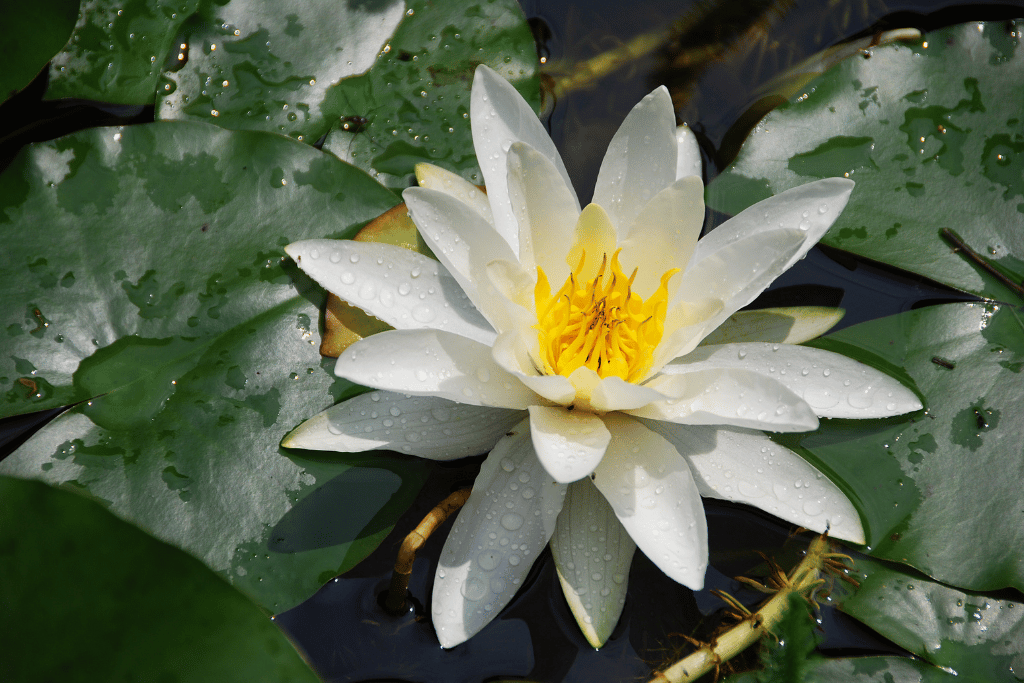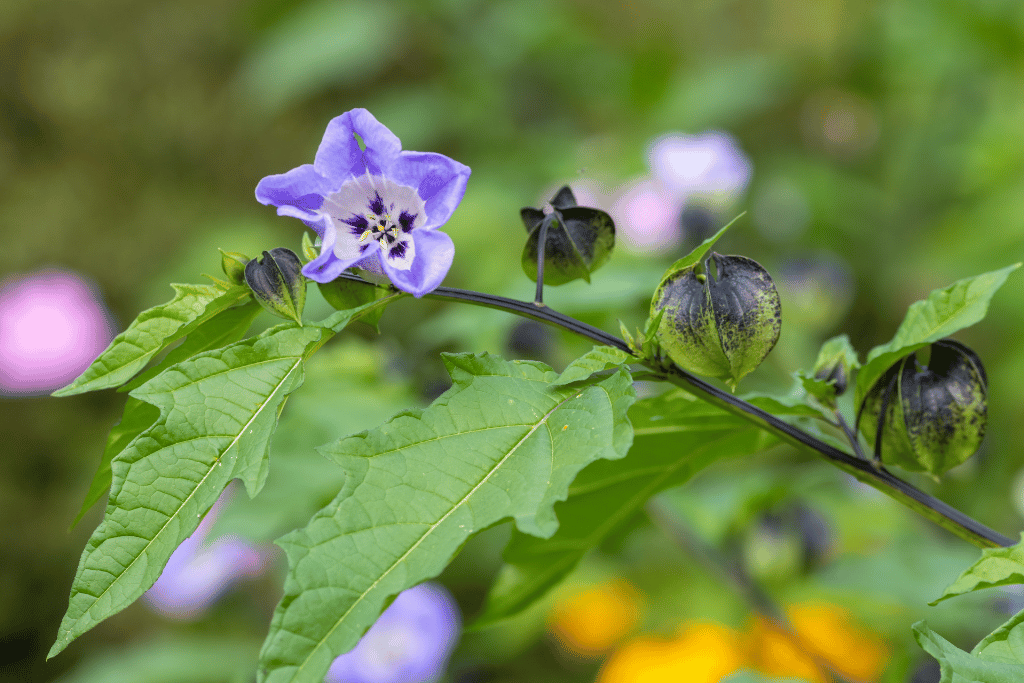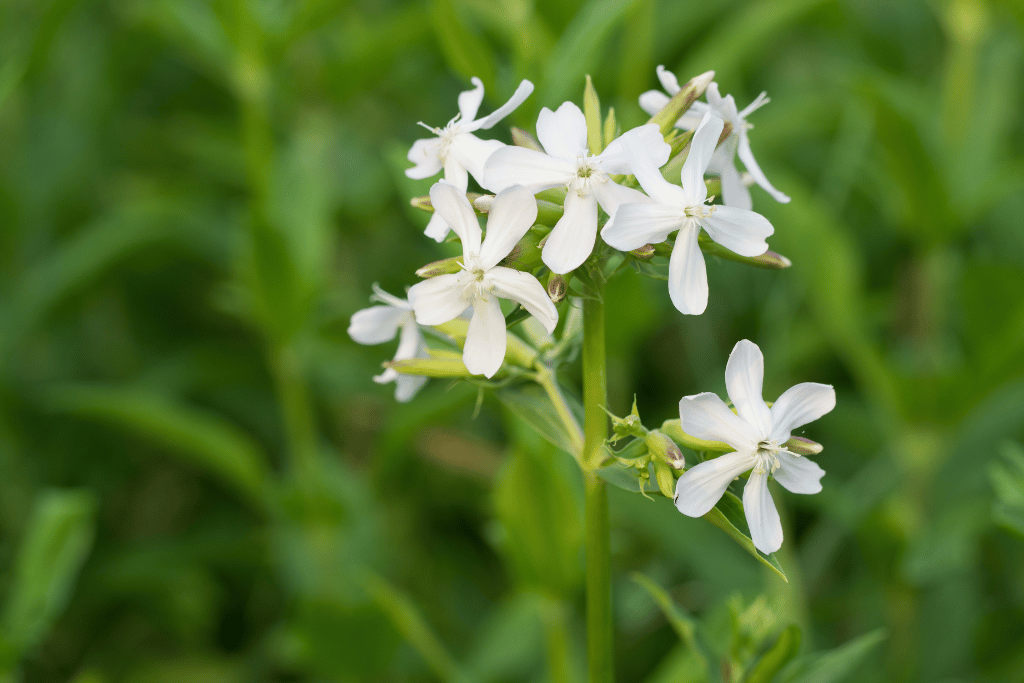I really enjoy gardening and taking care of different kinds of flowers. One day, my friend gave me a fun challenge: to make a list of flowers that start with N. I thought it would be easy, but it turned out to be more interesting than I expected.
I started looking up flowers that start with the letter N and was surprised to find so many. Some of them were really pretty, like the Narcissus with its trumpet-shaped petals, and the Nasturtium which has colorful flowers you can actually eat!
Each flower portrayed its importance in different cultures.
As I made my list, I felt amazed by the variety of flowers that begin with ‘N.’ There was the elegant Nerine, the cheerful Nigella, and so many more!
Now, I’m excited to plant and take care of these ‘N’ flowers in my garden. It’s like creating a beautiful picture with nature’s colors and shapes. I can’t wait to see how they grow and make my garden even more wonderful!
20 Flowers That Start With N
1. Narcissus – Elegance in Spring

Narcissus, commonly known as daffodils, are perennial flowers that grace gardens with their elegance during the spring season. These trumpet-shaped blooms come in various shades of yellow and white, often adorned with a contrasting center. Narcissus symbolize rebirth and new beginnings, making them a popular choice for celebrating the arrival of spring and the renewal of life.
Their vibrant appearance and delightful fragrance make them a favorite among garden enthusiasts and flower lovers alike. Whether displayed in gardens or used in floral arrangements, Narcissus never fail to bring a touch of cheerfulness and vitality to any setting.
2. Nasturtium – Colorful Edible Blooms

Nasturtium is a versatile flowering plant that adds a burst of color to gardens and culinary creations alike. These vibrant flowers come in shades of orange, yellow, and red, and their distinct rounded leaves are also edible and have a peppery flavor reminiscent of arugula.
Nasturtiums are not only visually appealing but also serve as a companion plant in gardens, deterring certain pests from damaging other crops. These hardy and easy-to-grow flowers are a favorite among gardeners who value both aesthetics and functionality in their outdoor spaces.
3. Nicotiana – Fragrant Night Blooms

Despite its name, Nicotiana is not the same plant used for tobacco production; rather, it’s a charming addition to gardens that thrive in the magic of the night. Nicotiana, commonly referred to as flowering tobacco, is known for its intoxicating fragrance that becomes especially potent in the evening.
These tubular blooms open at night and release their sweet scent, attracting moths and other pollinators. Available in various colors, including white, pink, and purple, Nicotiana adds an enchanting touch to moonlit gardens and outdoor spaces.
4. Nigella – Delicate and Mystical

Nigella, flowers come in shades of blue, white, and pink, and their distinct look makes them a favorite for both garden borders and floral arrangements. These pretty queens, called love-in-a-mist, is a delicate and intriguing flower that captures attention with its unique appearance. The blooms are surrounded by finely cut, feathery leaves, creating an ethereal and mysterious effect reminiscent of a delicate veil. While the flowers themselves are relatively small, Nigella’s distinctive foliage gives it a captivating presence in gardens and arrangements.
These Nigella’s whimsical charm and captivating structure make it a true standout in any garden setting. Its ability to self-sow adds an element of surprise, as new generations of Nigella plants continue to grace the garden year after year, reminding us of the beauty that can emerge from even the most intricate and delicate aspects of nature.
5. Nemesia – Petite and Vibrant

Nemesia is a favored option for planting in early spring and fall due to its capacity to flourish in cooler climates. Gardeners value its adaptability as both a bedding plant and a container filler. Whether incorporated into single-color arrangements or combined with other blooms, Nemesia’s vibrant shades bring a pleasant touch to gardens seeking vibrancy and allure.
Despite their small size, Nemesia flowers are known for their remarkable vibrancy and ability to produce numerous blossoms. Their charming appearance makes them an excellent choice for adding splashes of color to landscapes, borders, and hanging baskets. Nemesia is a petite flowering plant that packs a punch of color in its compact blooms. These vibrant flowers are often seen in shades of purple, pink, and yellow, creating a cheerful display in garden beds and containers.
6. Nierembergia – Graceful Ground Cover

Nierembergia, commonly referred to as cupflower, is a perennial plant of short stature that creates an elegant floral carpet. Displaying dainty lavender, blue, or white flowers that bear a resemblance to petite cups, Nierembergia finds frequent application as both a ground covering and a border element within garden settings. Its delicate demeanor and capacity to propagate render it a delightful supplement to outdoor environments, imparting a gentle and enchanting ambiance.
Nierembergia’s subtle beauty is perfect for creating visual interest in garden spaces. Whether allowed to cascade over walls or used to line pathways, its delicate flowers bring a sense of tranquility and elegance. As a ground cover, Nierembergia not only adds visual appeal but also helps suppress weed growth, making it a practical and aesthetically pleasing choice for various garden designs.
7. Nolina – Desert Elegance

In landscapes, Nolina serves as an eye-catching focal point, standing as a testament to nature’s ability to adapt and thrive in challenging conditions. Its distinctive appearance and ability to thrive with minimal water maintenance make Nolina an intriguing choice for gardeners seeking to add a touch of desert elegance to their landscapes. This slow-growing plant is known for its resilience in harsh desert environments. Nolina’s architectural form and ability to withstand drought and extreme temperatures make it a valuable addition to xeriscaped gardens.
Nolina, commonly known as beargrass or ponytail palm, is a unique and sculptural plant native to arid regions of North America. Despite its name, Nolina is not a palm but belongs to the asparagus family. With its long, narrow leaves that cascade gracefully, Nolina’s appearance is reminiscent of a cascading fountain of foliage.
8. Nectaroscordum – Unique Floral Structure

Native to Mediterranean regions, Nectaroscordum produces clusters of pendant bell-shaped flowers that hang gracefully from sturdy stems. The individual flowers are uniquely arranged, resembling a delicate chandelier of blooms. The flowers of Nectaroscordum are usually a combination of green and maroon or purple hues, creating an intriguing contrast. Their unusual appearance makes them a conversation piece in gardens and a favorite for floral arrangements. Nectaroscordum, commonly referred to as Mediterranean bells or Sicilian honey garlic, is a plant known for its distinctive floral structure.
Nectaroscordum’s resilience and ability to thrive in a range of soil conditions make it a versatile choice for various garden styles, from cottage gardens to modern landscapes. Its captivating form and charming blooms bring an element of surprise and elegance to garden spaces, showcasing the beauty that can be found in nature’s diversity.
9. Nemophila – Whimsical Woodland Beauty

Nemophila, commonly known as baby blue eyes, is a delicate annual flower that thrives in woodland and shaded garden areas. Its charming name is a nod to the enchanting sky-blue flowers with white centers, resembling the innocent gaze of a baby. When planted en masse, Nemophila’s dainty blossoms create a carpet-like effect, adding a touch of woodland magic to landscapes.
Nemophila’s adaptability to partial shade and its preference for cool temperatures make it a great choice for early spring and late fall plantings. These flowers often naturalize in the right conditions, gracing gardens year after year with their ephemeral beauty. Gardeners seeking to recreate the tranquility of forest floors or add a touch of nostalgia to their gardens often turn to Nemophila. Its delicate presence and ability to thrive in shaded environments make it a whimsical and cherished addition to various garden styles.
10. Nuphar – Aquatic Majesty

Nuphar’s presence not only adds visual appeal but also provides important habitat and food sources for aquatic creatures. The intricate network of roots and leaves contributes to maintaining healthy aquatic ecosystems. Nuphar’s ability to create serene and picturesque scenes on the water’s surface has made it a symbol of tranquility and serenity in various cultures. Whether admired from afar or observed up close in a pond or wetland, Nuphar’s aquatic majesty is a testament to the intricate interplay between nature’s elements.
Unlike its relative, the lotus, Nuphar’s leaves float on the water’s surface, while its large, showy flowers rise above the water. These flowers are often yellow or shades of orange, creating a stunning contrast against the water’s reflective surface. Nuphar, commonly known as the water lily or spatterdock, is a majestic aquatic plant that adds beauty to ponds, lakes, and other water bodies.
11. Nolana – Coastal Marvel in Bloom

The vibrant hues of Nolana bring forth the calmness of the sea and the liveliness of coastal scenes. Displaying trumpet-shaped blooms in varying tones of blue, lavender, pink, and white, this flower, recognized as the Chilean bellflower, stands as a coastal wonder, adorning seaside settings with its exquisite charm.
Nolana is ideally suited for beachfront gardens and coastal landscapes because it can endure salty winds and sandy soils. Its blooms open during the day and close in the evening, creating a dynamic and captivating display. Gardeners looking to capture the essence of coastal regions or create a nautical-themed garden often choose Nolana for its striking appearance and ability to thrive in challenging conditions.
12. Nandina – Heavenly Bamboo’s Grace

A flexible shrub cherished for its elegant leaves and distinctive growth pattern is Nandina, frequently referred to as heavenly bamboo or sacred bamboo. Despite its common name, Nandina doesn’t belong to the bamboo family; instead, it is part of the barberry botanical group. Its sophisticated compound leaves and captivating transformations in color throughout the seasons contribute to its continuous visual appeal.
Nandina’s delicate leaves turn shades of red, bronze, or burgundy in autumn and winter, creating a visually striking contrast against evergreen foliage. Its upright growth and clusters of bright red berries add vertical interest and attract birds. Nandina is often used as an ornamental shrub in landscapes, and its adaptability to different soil types and light conditions makes it a dependable choice for gardens seeking a touch of elegance and dynamic color transitions throughout the seasons.
13. Nymphea – Aquatic Serenity

Nymphea, more popularly recognized as water lilies, symbolizes tranquility and elegance within watery surroundings. These magnificent blooms adorn the top of ponds and lakes, adding a touch of sophistication. Water lilies can be found in various hues, from immaculate white to pink, yellow, and red tints, often showcasing intricately designed leaves.
Nymphea blossoms, unfurling by day and gently closing as night falls, craft a serene and captivating spectacle upon the water’s expanse. The drifting leaves of Nymphea serve a crucial purpose, casting vital shade upon aquatic habitats, thereby moderating water temperatures and deterring the proliferation of algae. The fusion of water lilies with tranquility and unsulliedness has forged them into an emblem of spiritual illumination across diverse societies. Whether gracing untouched ponds or nurtured water installations, Nymphea encapsulates the tranquil elegance inherent to aquatic vistas.
14. Nerine – Elegance in Blossom

Nerine, often referred to as the “Guernsey Lily,” is a genus of exquisite flowering plants known for their striking and elegant blooms. Native to South Africa, these bulbs produce tall, slender stems crowned with clusters of vibrant, trumpet-shaped flowers. Nerine’s flowers come in shades of pink, red, and white, creating a dazzling display that adds a touch of elegance to gardens and floral arrangements.
These resilient flowers often bloom in late summer or early autumn, when many other plants are fading. Their ability to bring bursts of color to the garden during this transitional period makes them highly valued. Nerine’s unique appearance and captivating hues make it a favorite among gardeners seeking to extend the beauty of their landscapes into the fall season. Whether planted in borders, rock gardens, or containers, Nerine’s graceful blossoms are a testament to the intricate beauty found in nature.
15. Nepeta – Aromatic Catmint

Nepeta, commonly known as catmint, is a group of aromatic flowering plants that captivate with their soft, billowing foliage and vibrant blooms. Native to Europe and Asia, Nepeta’s popularity in gardens is due to its low-maintenance nature, pleasing fragrance, and the way it attracts pollinators, especially cats. The silver-gray leaves and spiky flowers come in various shades of blue, lavender, and pink, creating a delightful contrast against the foliage.
Catmint is often used as a border plant, ground cover, or addition to herb gardens. Its ability to tolerate dry conditions and thrive in sunny spots makes it a resilient choice for various garden styles. The aromatic leaves release a pleasing scent when brushed against, adding sensory appeal to outdoor spaces. Whether admired for its aesthetic charm or appreciated for its role in supporting pollinators, Nepeta’s presence brings both visual and olfactory delight to gardens.
16. New Zealand Tea Tree – Coastal Beauty in Bloom

New Zealand Tea Tree, native to New Zealand and Australia, this shrub is often found along coastal areas, where it withstands salt spray and sandy soils. The flowers range in color from white to shades of pink, red, and purple, creating a vibrant and inviting scene. These lovely flowers , botanically known as Leptospermum scoparium, is a versatile evergreen shrub celebrated for its resilience and profusion of charming blossoms.
Despite its name, the New Zealand Tea Tree is not used to make tea, but its leaves were historically used by indigenous populations for their medicinal properties. In gardens, this shrub serves as a valuable ornamental choice, attracting pollinators and adding beauty to coastal landscapes. Its ability to adapt to various soil types and its drought tolerant conditions make it a hardy and attractive option for gardens seeking a touch of coastal charm.
17. Nicandra – Enigmatic Blue-Eyed Beauty

Nicandra physalodes, commonly known as Nicandra or shoo-fly plant, is an enigmatic annual flower that graces gardens with its distinct appearance and unique blossoms. Native to South America, Nicandra features bell-shaped flowers with purple-blue petals and a prominent central eye. The blooms are nestled among striking, papery husks that encase the developing seed pods, adding an air of mystery to the plant’s allure.
Nicandra’s whimsical appearance and charming flowers make it a favorite for cottage gardens, borders, and wildflower meadows. Its foliage has a repellant effect on certain pests, which is how it acquired the nickname “shoo-fly plant.” Additionally, its intriguing seed pods add an element of curiosity to gardens. Whether appreciated for its delicate blooms or its role in natural pest control, Nicandra is a unique and intriguing addition to garden spaces.
18. Night-Flowering Catchfly – Nocturnal Beauty

Originating from Europe, the Night-Flowering Catchfly is a biennial or short-lived perennial plant that forms clusters of sweet-scented, star-shaped white blossoms that unfurl once the evening begins. This plant, scientifically referred to as Silene noctiflora, is a mesmerizing wildflower that bursts into activity during the night hours. Its intriguing nighttime blooming behavior is an evolutionary strategy to allure moths that are active at night, and these creatures play a crucial role as its main pollinators.
This wildflower’s ability to flourish in poor soils and its preference for well-drained sites make it a hardy choice for meadows, open fields, and even rock gardens. Its ethereal beauty and its unique role in attracting pollinators during the night make Night-Flowering Catchfly an essential part of nocturnal ecosystems. Observing its delicate blooms in the moonlight provides a glimpse into the fascinating interactions between plants and their pollinators in the nighttime hours.
19. Night Violet – Ephemeral Nocturnal Beauty

Botanically, Night Violet, known as Hesperis matronalis, is a captivating flowering plant that enchants gardens with its delicate blossoms and enchanting fragrance. Native to Europe and Asia, this biennial or short-lived perennial blooms in the evening, releasing a sweet and alluring scent that becomes especially pronounced after dark. The flowers, which can range in color from white to shades of pink and purple, contribute to the plant’s romantic and ephemeral allure.
Night Violet’s slender stems bear clusters of four-petaled flowers, creating a graceful and charming display against the backdrop of the night sky. Its ability to thrive in various soil types and its adaptability to both sunny and partially shaded locations make it a versatile addition to gardens seeking a touch of nocturnal magic. Planted near seating areas or pathways, Night Violet invites admirers to experience the enchantment of a moonlit garden.
20. Nettle – Nature’s Beneficial Sting

Nettle is a precious garden asset, with its leaves employed for ages in herbal treatments and conventional medicine. Furthermore, nettle has served the purpose of textile production, supplying fibers for apparel and cords. When nurtured attentively, it bestows both remedial and environmental significance as a habitation for diverse insects. Abundant in vitamins, minerals, and antioxidants, nettles offer potential health advantages, encompassing anti-inflammatory characteristics and assistance with allergies.
Nettle, scientifically known as Urtica, is a versatile plant that is both admired for its ecological importance and infamous for its stinging properties. This perennial herbaceous plant has serrated leaves that are covered in tiny hairs containing irritant chemicals. While accidental contact with these hairs can cause temporary discomfort, nettle is also highly valued for its many benefits.



